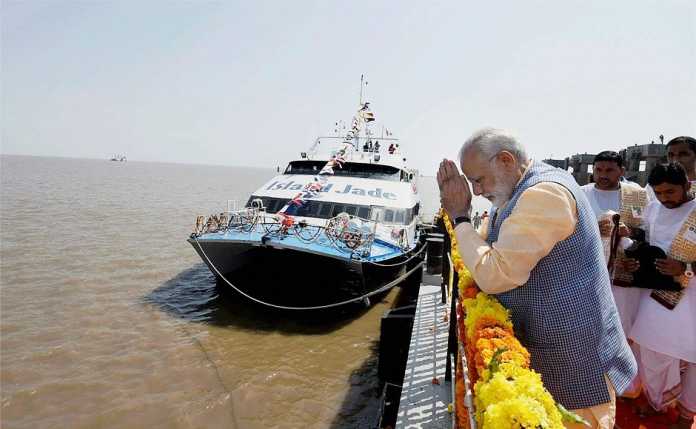Prime Minister Narendra Modi inaugurated Phase 1 of the ‘roll-on, roll-off (ro-ro)’ Ghogha-Dahej ferry service in Gujarat on Sunday. The ferry will ply the Gulf of Khambhat between peninsular Saurashtra and South Gujarat. Ghogha situated in Bhavnagar district of Saurashtra, across the gulf from Dahej in Bharuch district. This will be South-Asia’s first world-class ferry service.
- The term ‘ro-ro’ is used in reference to large ocean-going vessels. The vessels have either built-in or shore-based ramps on which the cargo is rolled on and off the vessel when in port.
- The ferry will be able to hold up to 100 vehicles and 250 passengers in its between the two ports.
- The ro-ro ferry services are made to carry wheeled cargo (cars, trucks, trailers and railroad cars) that are driven on and off the ferry on their own wheels or using a platform vehicle.
- This project cost stands at Rs 614 crore. According to The Indian Express, the central government has allocated Rs 117 crore for dredging work at both Ghogha and Dahej under the Sagarmala initiative.
- Tenders for the project were circulated in 2011 by the Gujarat government body in charge of marine and ports affairs along the state’s coastline.
- The service will reduce the travel time between Ghogha and Dahej to just over an hour, a commute that initially took 7-8 hours. The distance between the two places would be reduced to 31 km from the current distance of 360 km.
- PM Modi will travel in the maiden voyage of this service. The ferry service is aimed at boosting the connectivity and infrastructure in Gujarat.
- Earlier, an attempt was made by a private firm with the support from the state government to launch a ferry service between Okha and Mandavi in Kutch district across the Gulf of Kutch in 2016. However, it was suspended due to technical and financial challenges.
The government claims at least one crore jobs would be generated under Sagarmala in the next four to five years. According to logistics solutions provider Global Ocean Group, the Sagarmala project will add 2 percent to the country’s GDP.






























